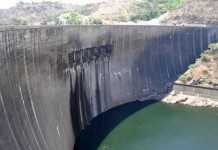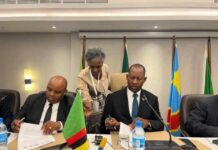By ALAN COWELL, Special to the New York Times
Published: January 2, 1983
Adamson Bratson Mushala was killed late in 1982 in a military ambush near Solwezi, in the remote reaches of Northwestern Province, where his bizarre story began with a post-independence dispute in the 1960’s and ended with a bullet through the eye.
His death culminated a protracted, if low-key, army campaign whose failures had become as much a part of the national fabric as had the mythology surrounding the man.
At his death, the official report said, Mushala was carrying wild honey and therefore had trouble reaching for his rifle to return the army’s fire. So great was official concern that no one would believe that the rebel had finally been slain that the state-run television devoted prime-time viewing one night to lurid close-ups of his cadaver. A Posthumous Tour?
A man wrote to the newspapers, suggesting that the body be frozen and taken on a tour of the country in a truck to convince Zambians that Mushala, sorcerer and villain and figure of fear, had at last been killed.
Mushala’s saga, according to the official version, opened when Zambia, the former British colony called Northern Rhodesia, achieved independence in 1964. A lowly game ranger, Mushala petitioned the country’s first and so far only President, Kenneth D. Kaunda, for a position befitting his ambitions: chief game ranger, or Minister of Tourism and Wildlife. The request was turned down. The rebellion began.
Mushala lay low for many years. He was, according to the Government, sighted once in South African-controlled South-West Africa, where he had taken refuge from the Zambian Army and where instructors from Pretoria reportedly trained him in the arts of insurgency and guerrilla warfare.
His most active phase is generally deemed to have begun in 1975 when he and the rest of his small band – known as the Mushala Gang and never reckoned to number more than two dozen -revealed themselves, depending on the source, as plunderers and highway robbers, or as more benevolent figures taking from the rich what was to be given to the poor. The consensus in recent years is that the poor did not see much of what was taken from the rich, but did not denounce him. Tales of Magic
Mushala’s area of operations was a tract of featureless bush in the northwest where his tribe, the Kaonde, had long put down its roots. The tribe offered the dissident warden a degree of shelter, and the vastness of the terrain also helped him, making police searches impossible. Additionally, strange tales began to emerge, suggesting that Mushala was armed not only with automatic rifles but also with magic.
”While Mushala was highly trained in guerrilla warfare, he was also strongly believed to be surviving through a complexity of witchcraft and supernatural powers,” wrote Hicks Sikazwe, a Zambian journalist who spent part of his military service hunting for Mushala.
”In fact, unconfirmed reports in Solwezi had it that the Government had hired herbalists at one time, locally and abroad, to come and try to net the gangster, to no avail.” Mr. Sikazwe said. ”There were also other strange stories which claimed that Mushala operated in the form of a huge bird, while others said sometimes he could turn into a whirlwind.”
That was not all. Some Zambians believed that Mushala could make himself invisible and had a sorcerer’s power to turn bullets into water. There were also somber suggestions that he had connections on high and hence foreknowledge of the military’s intentions. ‘Political Motives’ Cited
He also became part of the patchwork of evidence by which southern Africa’s black leaders substantiate the widely held belief in a South African campaign to destabilize neighboring countries. ”Mushala abducted women, Mushala burned villages, Mushala shot at security forces,” Mr. Sikazwe wrote. ”There were political motives behind his incursions.”
Yet those who seek wider portends from Mushala’s demise might find them difficult to discern. He may have terrorized an entire province, but it was a distant province and his activities did not dent Mr. Kaunda’s supremacy.
Neither, if the South African connection is verified, did Mushala’s exploits equal Pretoria’s actions against Mozambique, Angola and Lesotho.
And he was never more than a nuisance for a Government facing much tougher problems at the time of Mushala’s greatest prominence – a guerrilla war across its border in what was then Rhodesia and is now Zimbabwe, entrenched economic decline and crippling difficulties with transport routes from a landlocked nation.
Mushala’s death coincided with an outburst of crime in the economically crucial area of Zambia known as the Copper Belt. Poor police reaction to robbery in broad daylight by organized gangs had dented public confidence in the nation’s security forces and their ability to protect citizens.
So the final crushing of the miniature insurgency did something, Westerners and Zambians said, to refurbish the army’s image after seven years of failure to track down Mushala.

 JOIN DRIVERN TAXI AS PARTNER DRIVER TODAY!
JOIN DRIVERN TAXI AS PARTNER DRIVER TODAY!












Incompetence perpetuated Mr. Mushala’s reign of terror.